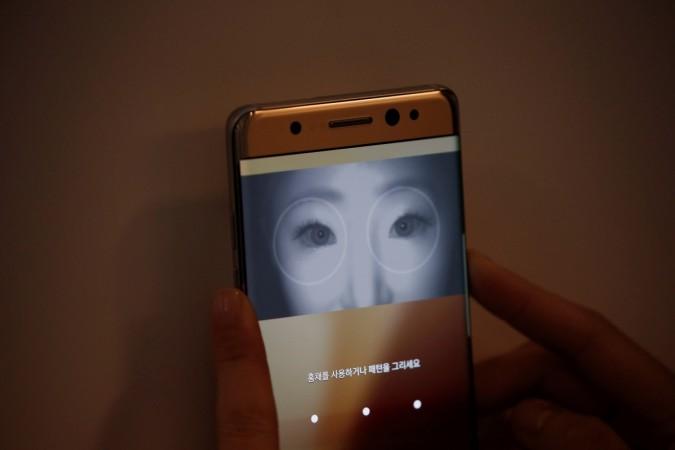
If you think fingerprint scanner in a smartphone is pretty cool, you still haven't tried out the evolving iris scanning technology. Thanks to Samsung, this new method of biometric security has become common knowledge instead of being a niche feature. Samsung Galaxy Note 7 features the advanced iris scanning technology to authenticate its owner, which is said to work more accurately than a fingerprint scanner.
Sure, the iris scanning looks future tech and pretty cool for those who fancy super-secret spy movies such as James Bond. Before Samsung integrated the technology in the Galaxy Note 7, the iris scanner had made its way to several smartphones such as Microsoft 950 XL and Fujitsu NX F-04G, but could never hit the mainstream.
Taking example of the Galaxy Note 7's iris scanner, we will be exploring how the feature works and the pros and cons of the new breakthrough technology.
How does iris scanning work to authenticate its owner?
First of all, let's clearly understand what an iris of an eye is. Iris is a crucial part of an eye, which is thin and circular in structure. It controls the diameter and size of the pupil, in turn controlling the amount of light which reaches the retina – a layer of tissue that transforms light into visual information. Iris is responsible for the colour of your eye, which can be seen as wavy lines on the surface. While brown is the most common eye colour, green, amber and silver are the rarest ones defined by iris.
Moving on to the technical aspect of how the iris scanners work, here's a simpler explanation. Just like the fingerprint scanners authenticate the unique pattern of your finger, iris scanners scan the wavy lines of the irises, which is extremely complex than fingerprints thus higher security.
If you are thinking the smartphone takes a picture of your eye to compare it with the image on record, then you are wrong. For instance, Samsung Galaxy Note 7 has an LED shooting near-infrared light and a dedicated camera just to perform iris scans. The iris scanning starts with a beam of near-IR light directed at the person's eye and the dedicated camera with a narrower angle of view kicks capture the iris and convert it into a code, which can be later used to compare. The benefit of this near-IR light is that it works even in the dark.
Iris scanner vs fingerprint scanner
The level of security in both the technologies is supreme, but the iris scanner takes an edge. It is easy to replicate a fingerprint scanner as it can be picked up from any solid surface. On top of that, the fingerprint scanners usually fail to recognize wet and dirty fingers.
In the case of an iris scanner, it is practically impossible to take a high-resolution image of an iris without the person's knowledge. The iris of an eye is always clean, which makes iris scanners to scan easily. One must ensure the lens of an iris scanner is clean at all times.
Is it harmful?
Several concerns have been raised with regards to the shining beam of light casted directly at your eyes. Usually, the pupil of an eye contracts when bright light enters the eye, limiting the amount of light entering the retina. But the Iris scan beams an invisible ray, which enters the eye without any obstruction.
Samsung has advised against keeping the Galaxy Note 7 too close while scanning the iris and one should maintain a distance of about 10-15 inches. But there is no clear study to conclude that if iris scanners actually harm the eye over long term usage.
Iris scanners are not retina scanners
Iris and retina scanners may seem similar, but they are vastly difference. Retina is the inner part of an eye, and retina scanner looks into the user's eye to get the exact reading whereas the iris scanner simply takes the necessary reading from the surface. It is nearly impossible to integrate retina scanners into mobile phones as it requires the user to hold the scanner close to the eye for it to scan properly. Of course, the level of security in retina scanner is higher, but the question of convenience will be a major challenge for OEMs to overcome. Imagine sticking up your smartphone on your face so the retina scanner can unlock the phone.















